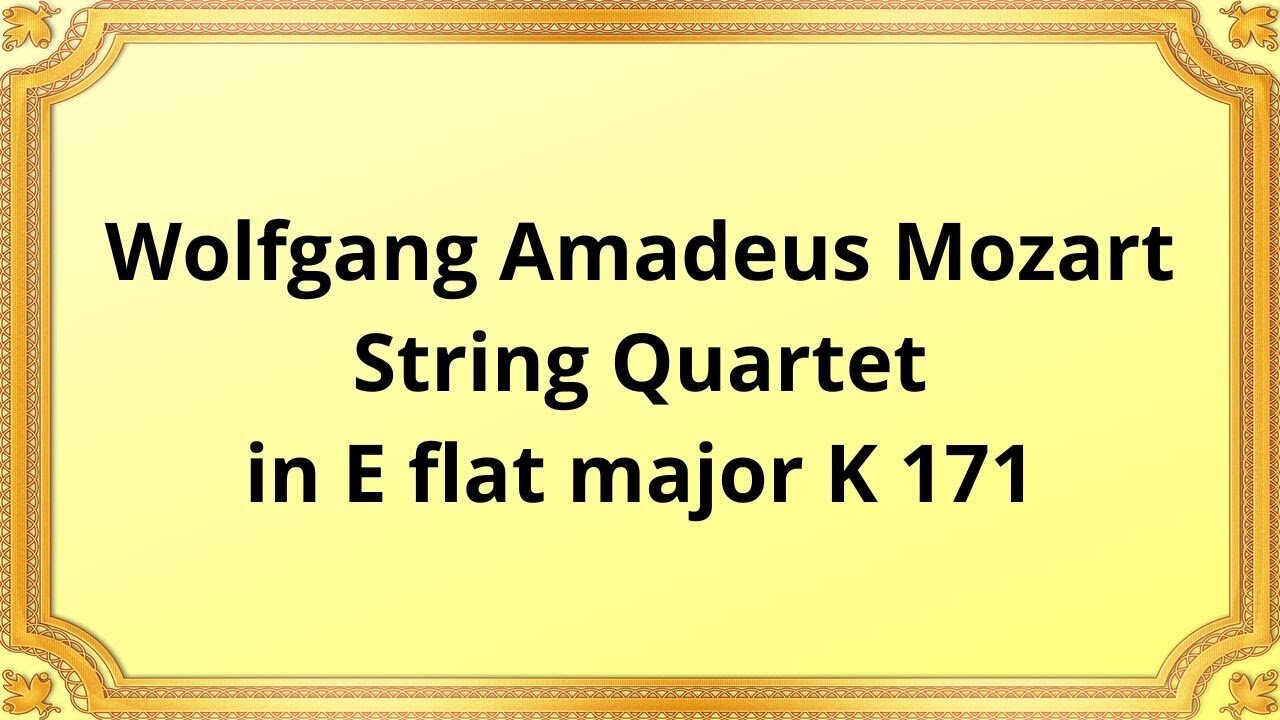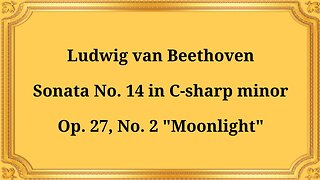Premium Only Content

Wolfgang Amadeus Mozart String Quartet in E flat major K 171
#Mozart #StringQuartetInEFlatMajor #Music #Composition #Classical #Baroque #Vienna #Musician #Composer #18thCentury #Masterpiece #ChamberMusic #Orchestra #Ensemble #Melody #Harmony #Rhythm #Performance #Art #Genius #VienneseClassicalSchool #FamousComposer #MusicalGenius #HistoricalMusic #MusicalLegacy #MusicHistory #MusicTheory #MusicalInfluence #Mozartian #MusicalProdigy
Publication date 1936
Kreiner Quartet
Sylvan Shulman (violin I)
Jacques Larner (violin II)
Edward Kreiner (viola)
Alan Shulman (’cello)
Wolfgang Amadeus Mozart, one of the most celebrated composers in history, left an indelible mark on the world of classical music. His String Quartet in E flat major K 171 stands as a testament to his prodigious talent and creative genius.
Composed in 1773, during Mozart's early years, the String Quartet in E flat major K 171 reflects the Viennese Classical style prevalent during that era. Mozart was only 17 years old at the time, yet he demonstrated an astonishing level of maturity and sophistication in this work. The quartet was written during a period of immense growth for Mozart, as he began to establish himself as a prominent composer in Vienna.
The String Quartet in E flat major K 171 consists of four movements: Allegro, Andante, Menuetto, and Allegretto. Each movement showcases Mozart's exceptional ability to craft intricate melodies, harmonies, and rhythmic patterns. The Allegro movement opens with a lively and playful melody, followed by a contrasting second theme that adds depth and emotional richness. The Andante movement exudes a sense of tranquility and introspection, featuring lyrical melodies performed by the strings. The Menuetto movement introduces a spirited dance-like rhythm, while the Allegretto finale brings the quartet to a triumphant conclusion with its energetic and virtuosic passages.
Mozart's String Quartet in E flat major K 171, although lesser-known compared to his more famous compositions, remains a testament to his musical prowess and ability to captivate audiences with his melodic genius. Its technical demands and harmonic intricacies make it a favorite among string quartets worldwide. The quartet's historical significance lies in its contribution to the Viennese Classical tradition, which laid the foundation for future generations of composers.
Conclusion:
Wolfgang Amadeus Mozart's String Quartet in E flat major K 171 shines as a remarkable example of his early musical brilliance. Through its four movements, Mozart demonstrates his mastery of melody, harmony, and rhythm, captivating listeners with his youthful exuberance and prodigious talent. This composition continues to be celebrated by musicians and music enthusiasts alike, serving as a testament to Mozart's enduring musical legacy.
You have the opportunity to support the channel
https://www.donationalerts.com/r/radsiaral
-
 18:26
18:26
Classical music_Music Inspiration
1 month agoLudwig van Beethoven Sonata No. 14 in C-sharp minor, Op. 27, No. 2 "Moonlight"
791 -
 LIVE
LIVE
TimcastIRL
2 hours agoNew DOCS PROVE Obama Hillary CONSPIRACY To SABOTAGE Trump Admin | Timcast IRL
24,694 watching -
 LIVE
LIVE
Laura Loomer
3 hours agoEP136: YOU'RE FIRED! White House Vetting Crisis Continues
725 watching -
 LIVE
LIVE
SpartakusLIVE
3 hours agoDuos w/ @GloryJean || #1 Masculine Muscle MASS sears YOUR retinas with MIND BENDING content
520 watching -
 8:07
8:07
MattMorseTV
2 hours ago $0.13 earnedTrump just LOWERED PRICES by 75 PERCENT.
43110 -
 LIVE
LIVE
Misfit Electronic Gaming
5 hours ago"LIVE" "Blind Descent' +"Dollhouse of Dead" Playtest 10 Followers till we hit 1000! We CAN do this!
46 watching -
 21:53
21:53
Glenn Greenwald
5 hours agoMichael Tracey on the Street: What Do People Think of the Epstein Case?
82.6K52 -
 LIVE
LIVE
megimu32
2 hours agoOTS: Board Games Gone Wild! The Loud, Weird & Chaotic Games That Raised Us
134 watching -
 LIVE
LIVE
DamnDanieI
2 hours agoKill First, Loot Later – OTG Live
224 watching -
 56:41
56:41
Donald Trump Jr.
6 hours agoLies, Leaks, and Lawfare: Censorship Corruption Exposed | TRIGGERED Ep.263
112K105